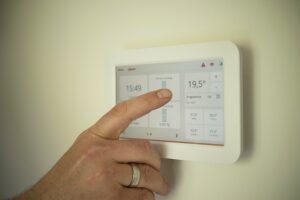 Fiber Bragg grating (FBG) has quickly become popular in fiber optics, and now it is impossible to imagine the absence of fiber optic sensing systems based on FBG technology. Researchers prefer to use fiber Bragg grating (FBG)-based sensing because of its benefits, for instance, compact size, fast response, distributed sensing, and immunity to the electromagnetic field.
Fiber Bragg grating (FBG) has quickly become popular in fiber optics, and now it is impossible to imagine the absence of fiber optic sensing systems based on FBG technology. Researchers prefer to use fiber Bragg grating (FBG)-based sensing because of its benefits, for instance, compact size, fast response, distributed sensing, and immunity to the electromagnetic field.
To be more precise, FBG technology finds its wide application in measurements of different physical factors (pressure, temperature, and strain for civil engineering, industrial engineering, military, maritime, and aerospace applications). Herewith, structural health monitoring of engineering and civil structures plays a crucial role now that can be easily carried out with fiber Bragg grating sensors.
It should be noted that the grating types of FBG include uniform, long, chirped, tilted, or phase-shifted (that has periodic perturbation of refractive index inside the core of the optical fiber). The development of fiber optic systems has greatly changed almost all areas of communication technology. Nowadays fiber optic sensors are widely used in the measurement of strain, refractive index, the vibration of structures and machines, electric current, voltage, impedance, temperature, pressure, humidity, etc.
Despite the crucial advancement in fiber optics, integration of optical mirrors, partial reflector, and wavelength filters provide numerous difficulties because of the complexity and high cost of fiber optic systems. Nonetheless, FBG technology allows overcoming all these challenges because fiber Bragg grating can offer the function of reflection, dispersion, and filtering required for sensing applications.
Ever since its development, fiber Bragg grating sensors have obtained much attention because they offer numerous benefits, for example, pretty low cost, compact size, real-time response, high precision, high sensitivity, and independence to electromagnetic interference. Moreover, FBG sensors are considered to be very promising in measuring physical parameters.
Modern applications of fiber Bragg grating sensors include such areas as “high-temperature sensors, health and biomedical devices, structural engineering, industries, biochemical applications, radioactive environment, aerospace, maritime and civil engineering, and many other fields.” Additionally, FBG sensors rapidly moved from research laboratories to actual installation in fiber optic systems.
Finally, it is very difficult to think of fiber optic sensors without employing fiber Bragg gratings due to its attractive parameters, which make them a highly advanced technology in the sensing field. The combination of FBG technology with other systems, in turn, will lead to the overall enhancement of sensor design in terms of sensitivity, performance, cost, and size.
Optromix is a fast-growing vendor of fiber Bragg grating (FBG) product line such as fiber Bragg grating sensors, FBG interrogators and multiplexers, Distributed Acoustic Sensing (DAS) systems, Distributed Temperature Sensing (DTS) systems. The company creates and supplies a broad variety of fiber optic solutions for monitoring worldwide. If you are interested in structural health monitoring systems and want to learn more, please contact us at info@optromix.com

